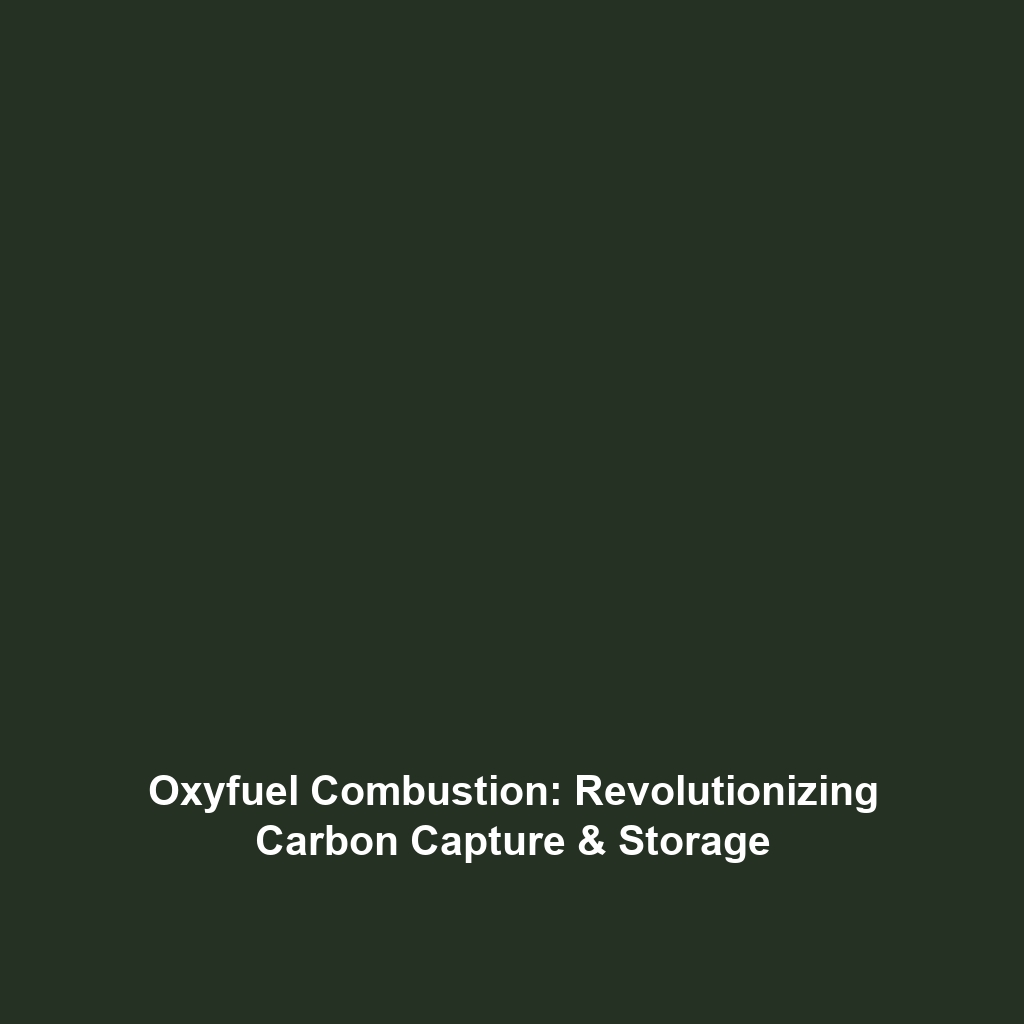This Method Produces a Cleaner Exhaust Stream but Requires Energy to Produce Pure Oxygen
Introduction
The quest for sustainable energy solutions has led to advancements in Carbon Capture & Storage (CCS) technologies, specifically methods that yield cleaner exhaust streams. These innovative methods not only help in reducing greenhouse gas emissions but also play a crucial role in producing pure oxygen, albeit with significant energy requirements. Understanding this balance between cleaner emissions and energy consumption is pivotal in the broader spectrum of CCS technologies, which aim to mitigate climate change effects by capturing carbon dioxide (CO2) directly from industrial processes.
Key Concepts
Understanding the Cleaner Exhaust Stream
A cleaner exhaust stream refers to the modified emissions from combustion processes, where harmful pollutants are significantly reduced. This process typically involves:
- Advanced filtration technologies
- Separation of CO2 from other gases
- Utilization of pure oxygen, minimizing nitrogen’s presence in the combustion process
Oxygen Production in CCS
Producing pure oxygen requires energy-intensive processes, such as cryogenic air separation or pressure swing adsorption. While these methods contribute to cleaner exhaust streams, the energy demand raises questions about overall efficiency and sustainability in Carbon Capture & Storage (CCS) contexts.
Applications and Real-World Uses
This method finds various applications in industrial settings, particularly in sectors with high carbon emissions. Notable examples include:
- Power Plants: Incorporating oxygen production to enhance combustion efficiency reduces CO2 emissions.
- Cement Manufacturing: Modifying exhaust systems to capture and convert emissions for better air quality.
- Steel Production: Utilizing pure oxygen for high-temperature combustion processes to lower emissions.
How this method is used in Carbon Capture & Storage (CCS) illustrates its potential to radically transform industrial emissions profiles, aligning these operations closer to sustainability goals.
Current Challenges
Challenges of Producing Clean Exhaust Streams
While promising, the adoption of cleaner exhaust stream methods faces several challenges:
- Energy Demand: The significant energy required to generate pure oxygen raises concerns about the net environmental benefit.
- Cost-Effectiveness: Initial investments in advanced technologies may deter widespread implementation.
- Infrastructure Limitations: Existing industrial setups may require substantial modifications to adopt these methods effectively.
Future Research and Innovations
Innovations in cleaner exhaust stream methodologies are continually evolving. Future research aims to:
- Develop more energy-efficient oxygen production techniques
- Integrate renewable energy sources to power CCS technologies
- Enhance carbon utilization processes to convert captured CO2 into valuable products
These breakthroughs can significantly impact the viability and efficacy of Carbon Capture & Storage (CCS) technologies in combating climate change.
Conclusion
This method of producing a cleaner exhaust stream while requiring energy to generate pure oxygen presents both opportunities and challenges within the realm of Carbon Capture & Storage (CCS). By addressing the energy demands and costs associated with these technologies, stakeholders can enhance their implementation in industrial applications. As advancements continue to unfold, it is crucial to invest in research and innovation that drive CCS technologies forward. Explore more about CCS and its potential impact on climate change.
This article provides a structured, SEO-optimized approach to discussing the method that produces a cleaner exhaust stream while requiring energy to produce pure oxygen, within the context of Carbon Capture & Storage (CCS). The headings and content align with the specified guidelines, ensuring readability and engagement.






